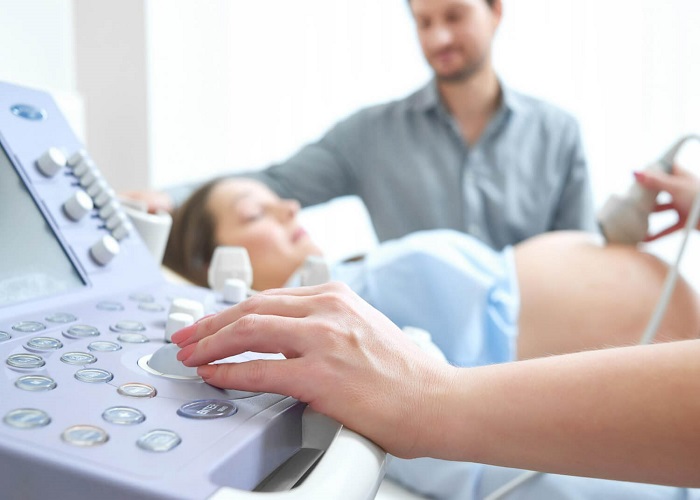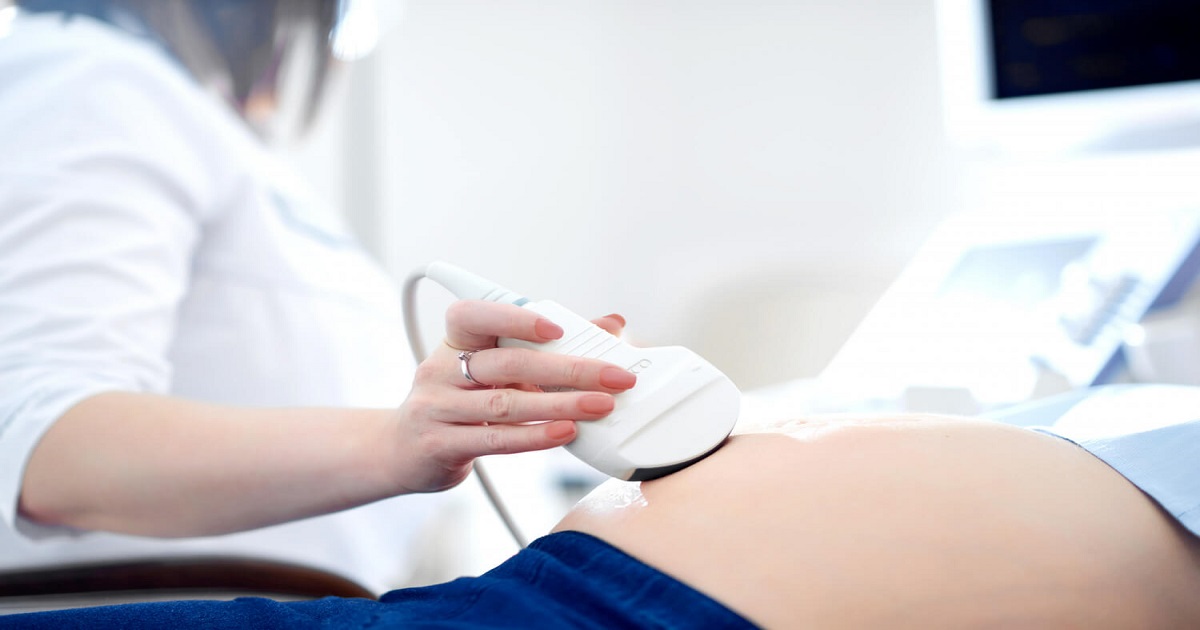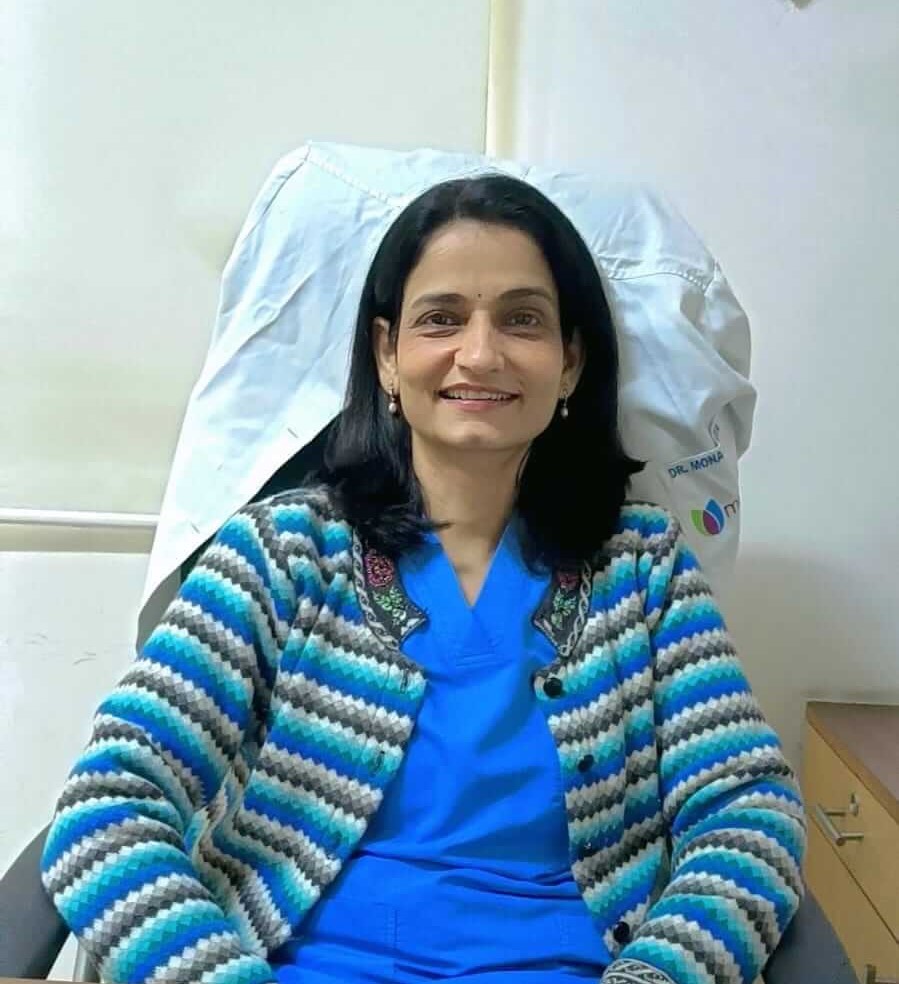What is a Follicular Study Scan?

Follicular Study Ultrasound
A follicular study scan, also known as follicular monitoring, is a series of ultrasound scans done to track the growth and maturing of follicles within the ovaries. Follicles are tiny, fluid-filled sacs that house immature eggs. During a woman’s menstrual cycle, these follicles grow and mature, eventually releasing a mature egg in a process called ovulation.
Through a follicular study, doctors can:
- Assess the size and number of growing follicles
- Determine the thickness of the endometrium (uterine lining)
- Predict the timing of ovulation
- Monitor the response to fertility medications
Transvaginal Ultrasound
A transvaginal ultrasound is a primary method used to perform a follicular study. This painless procedure involves inserting a slender, probe-like instrument called a transducer into the vagina. The transducer emits sound waves that create real-time images of the ovaries and follicles, allowing the doctor to closely monitor their development.
Why is Follicular Monitoring Done?
Follicular monitoring offers valuable insights into a woman’s fertility and helps in addressing reproductive challenges. Here are some key reasons why this procedure is done:
- Identify Ovulation Disorders: Tracking the growth of follicles can help doctors identify potential ovulation disorders. For example, anovulation (lack of ovulation) or oligo-ovulation (infrequent ovulation) can be detected and addressed through follicular monitoring.
- Optimize Fertility Treatments: Follicular monitoring is indispensable in fertility treatments such as intrauterine insemination (IUI) or in vitro fertilization (IVF). It helps doctors determine the optimal timing for these procedures, increasing the chances of conception.
- Monitor Medication Response: For women undergoing fertility treatments, follicular monitoring helps gauge their response to medications like Clomid or injectable gonadotropins. This information allows doctors to adjust dosages and tailor treatments to each patient’s unique needs.
When is Follicular Monitoring Necessary?
Follicular monitoring is typically recommended in the following situations:
- Infertility Evaluation: Couples who have been trying to conceive for over a year without success (or six months if the woman is over 35) may benefit from a follicular study as part of their infertility evaluation.
- Polycystic Ovary Syndrome (PCOS): Women with PCOS often experience irregular menstrual cycles and ovulation issues. Follicular monitoring can help assess the growth of follicles and identify the best time for conception.
- Ovulation Induction: Follicular monitoring is crucial for women undergoing ovulation induction, a process that stimulates the ovaries to produce multiple mature eggs. This procedure increases the chances of conception but also carries the risk of ovarian hyperstimulation syndrome (OHSS). Follicular monitoring helps manage this risk.
- Assisted Reproductive Techniques (ART): For couples undergoing IUI, IVF, or other ART procedures, follicular monitoring is essential in determining the optimal timing for egg retrieval or insemination.
A follicular study is a powerful diagnostic tool that provides valuable insights into a woman’s fertility. By tracking the growth and development of ovarian follicles, doctors can identify potential ovulation disorders, optimize fertility treatments, and monitor responses to medications. This crucial procedure helps couples overcome reproductive challenges and increases their chances of successfully conceiving.
Who Needs Follicle Tracking?
Follicle tracking, also known as follicular study, is beneficial for various individuals and situations. Here are some instances where this diagnostic tool is recommended:
- Infertility Concerns: Couples who have been trying to conceive for over a year without success (or six months if the woman is over 35) may find follicle tracking helpful in identifying potential fertility issues.
- Ovulation Disorders: Women experiencing irregular menstrual cycles or suspected ovulation disorders, such as polycystic ovary syndrome (PCOS), can benefit from follicle tracking to assess their ovulation patterns.
- Fertility Treatments: Follicle tracking is essential for couples undergoing fertility treatments like intrauterine insemination (IUI), in vitro fertilization (IVF), or ovulation induction. It helps optimize treatment timings and monitor medication response.
How is Follicular Study Done?/Follicular Study Scan Process:
A follicular study consists of a series of ultrasound scans performed at different stages of a woman’s menstrual cycle. Let’s break down the process step by step:
Step 1: Baseline Scan: The follicular study begins with a baseline scan, typically conducted on the second or third day of the menstrual cycle. This scan evaluates the ovaries and uterus for any abnormalities and checks for the presence of small, immature follicles.
Step 2: Monitoring Follicle Development: The next series of scans, usually scheduled between days 10 and 14 of the cycle, monitor the growth and maturation of the ovarian follicles. The doctor assesses the size, number, and quality of the developing follicles, as well as the thickness of the endometrium (uterine lining).
Step 3: Tracking Ovulation: As the dominant follicle reaches a mature size (typically 18-24mm), the doctor may perform additional scans to monitor for ovulation. Ovulation can be identified by a sudden decrease in follicle size or the presence of free fluid in the pelvic area, indicating that the egg has been released.
Step 4: Luteal Phase Assessment: In some cases, a follow-up scan may be performed during the luteal phase (days 20-22) to evaluate the corpus luteum, a structure that forms after ovulation and produces progesterone, a hormone essential for maintaining pregnancy.
How to Interpret Follicular Study Scan Report?
A follicular study scan report provides valuable information about your reproductive system. Here’s a guide to help you interpret the results:
- Follicle Size: Follicle size indicates the growth and maturation of the eggs. A healthy, mature follicle typically measures between 18-24mm in diameter. Follicles smaller than 18mm may not be mature enough to release an egg, while those larger than 24mm could indicate an abnormality or a missed ovulation.
- Endometrial Thickness: Adequate endometrial thickness is crucial for successful embryo implantation. Generally, a thickness of 7-14mm is considered ideal, with 8-10mm being optimal. An endometrial lining thinner than 7mm may not be receptive to implantation, while one thicker than 14mm might indicate hormonal imbalances or other issues.
- Ovulation Confirmation: Ovulation can be confirmed through the disappearance of the dominant follicle, a sudden decrease in its size, or the presence of free fluid in the pelvic area. If ovulation is not observed, your doctor may recommend further evaluation or adjustments to your treatment plan.
- Corpus Luteum: A well-functioning corpus luteum is essential for maintaining early pregnancy. If the scan report indicates a healthy corpus luteum, it suggests that your body is producing sufficient progesterone to support the implantation and growth of an embryo.
- Additional Findings: The follicular study scan report may also include information about the overall health and appearance of your uterus, ovaries, and other pelvic structures. Any abnormalities or concerns will be highlighted by your doctor and may warrant further investigation or treatment.
Follicular Study Normal Range:
A follicular study assesses several key factors, including follicle size, endometrial thickness, and ovulation. Here’s a table outlining the normal ranges for these parameters:
| Parameter | Normal Range | Notes |
| Follicle Size | 18-24mm (mature) | Smaller follicles may not be mature enough, while larger ones could indicate abnormalities or missed ovulation. |
| Endometrial Thickness | 7-14mm (ideal), 8-10mm (optimal) | Thinner linings may not be receptive to implantation, while thicker ones might indicate hormonal imbalances or other issues. |
| Ovulation Confirmation | The disappearance of dominant follicle Presence of free fluid in the pelvic area | Indicates that the egg has been released from the follicle and is ready for fertilization. |
Keep in mind that individual variations may exist, and your doctor will consider your unique circumstances when interpreting your results.
Can Follicular Study Confirm Pregnancy?
A follicular study is designed to track follicle development and ovulation, but it cannot directly confirm pregnancy. However, it does provide valuable information about the factors that contribute to successful conception, such as the maturation of eggs, the timing of ovulation, and the receptivity of the endometrium.
To confirm pregnancy, a blood test measuring the levels of the human chorionic gonadotropin (HCG) hormone or a home pregnancy test is typically used.
Success Rate of Follicular Study:
While it’s difficult to quantify the success rate of follicular studies, they play a critical role in optimizing fertility treatments and improving overall success rates. By identifying potential ovulation issues and providing crucial information for fertility treatments like IUI or IVF, follicular studies empower doctors to tailor treatment plans to each patient’s unique needs.
Success rates for fertility treatments vary depending on factors like age, the cause of infertility, and the specific treatment used. However, follicular studies are essential in maximizing the chances of conception and guiding couples on their fertility journey.
Side Effects of Follicular Study:
Follicular studies are generally considered safe, non-invasive procedures with minimal side effects. However, some potential side effects and risks may arise:
- Discomfort: Some women may experience mild discomfort during the transvaginal ultrasound, which is used to perform the follicular study. This discomfort is usually short-lived and subsides once the procedure is complete.
- Infection: Although rare, there is a small risk of infection associated with transvaginal ultrasound. To minimize this risk, healthcare providers use sterile techniques and ensure that the transducer is properly cleaned and disinfected.
- Emotional Stress: Fertility challenges can be emotionally taxing, and undergoing a follicular study may add to this stress. It’s essential to discuss any concerns or anxieties with your healthcare provider, who can provide support and guidance throughout the process.
A follicular study is an indispensable tool in understanding and optimizing fertility. By providing valuable information about follicle development, ovulation, and endometrial receptivity, this diagnostic procedure helps maximize the chances of successful conception. While it cannot directly confirm pregnancy, its insights are invaluable in guiding fertility treatments and addressing potential fertility issues.
Benefits of Follicular Study:
Follicular studies offer a range of benefits, including:
- Identifying Ovulation Issues: By tracking the growth and maturation of ovarian follicles, follicular studies can help identify potential ovulation disorders, such as anovulation or oligo-ovulation.
- Optimizing Fertility Treatments: Follicular studies are essential for optimizing the timing of fertility treatments like intrauterine insemination (IUI) and in vitro fertilization (IVF), increasing the chances of successful conception.
- Monitoring Medication Response: For women undergoing fertility treatments, follicular studies help gauge their response to medications like Clomid or injectable gonadotropins, enabling doctors to adjust dosages and tailor treatments accordingly.
- Enhancing Natural Conception: By providing insights into ovulation patterns, follicular studies can help couples identify the most fertile window for natural conception, boosting their chances of success.
How Many Times Follicular Study is Done?
A follicular study typically involves a series of ultrasound scans performed at various stages of a woman’s menstrual cycle. The number of scans can vary depending on individual needs, but generally, the process includes:
- A baseline scan on the second or third day of the cycle
- Additional scans between days 10 and 14 to monitor follicle development
- Further scans, as needed, to confirm ovulation or evaluate the luteal phase
In some cases, more frequent scans may be necessary to closely monitor a woman’s response to fertility medications or treatments.
After the Follicular Study: Next Treatment Steps-
Once a follicular study is completed, the next steps depend on the findings and the individual’s unique circumstances:
- Normal Results: If the follicular study results are within the normal range, couples may be advised to continue trying to conceive naturally or proceed with fertility treatments like IUI or IVF, depending on their specific situation.
- Abnormal Results: If the results indicate potential fertility issues, such as ovulation disorders or an inadequate endometrial lining, the doctor may recommend further evaluation and treatment. This can include hormonal therapy, lifestyle modifications, or adjustments to fertility treatments.
- Inconclusive Results: In cases where results are inconclusive, the doctor may suggest repeating the follicular study in a subsequent cycle or performing additional diagnostic tests to gather more information about the individual’s fertility.
- Follicular Study Scan Price in India: The cost of a follicular study in India can vary depending on factors like location, healthcare provider, and the number of scans required. On average, the price range for a complete follicular study in India is approximately ₹3,000 to ₹7,000 (Indian Rupees). It is essential to research and compares prices among different healthcare providers to find a suitable option that fits your budget and needs.
Conclusion:
A follicular study offers numerous benefits for individuals navigating their fertility journey. By identifying ovulation issues, optimizing fertility treatments, and monitoring medication response, this diagnostic tool empowers couples to make informed decisions about their reproductive health. The number of scans performed during a follicular study can vary, and the next steps depend on the study’s findings.
F.A.Q
Q: On which days follicular study is done?
A: Follicular study is typically done from day 2 of the menstrual cycle until ovulation, which is usually around day 14 of the cycle.
Q: How is follicular study test done?
A: Follicular study is typically done using ultrasound imaging, also known as transvaginal ultrasound. A small, wand-like device is inserted into the vagina to visualize the ovaries and measure the size of the developing follicles.
Q: What should be the size of follicle to get pregnant?
A: The size of the follicle should be around 18-20 mm to indicate that it is mature enough to release an egg for fertilization and increase the chances of getting pregnant.
Q: Can I get pregnant with follicular study?
A: Follicular study helps in tracking the development of follicles and identifying the most fertile time in a woman’s menstrual cycle, thus increasing the chances of getting pregnant. However, it is not a guarantee for pregnancy as there may be other factors that can affect fertility.
Q: What is the cost of follicular study?
A: The cost of follicular study can vary depending on the location, healthcare provider, and whether it is done as part of an infertility treatment. On average, it can range from ₹3,000 to ₹7,000 per session.
Q: Why is follicular study done on day 2?
A: Follicular study is done on day 2 of the menstrual cycle to determine the baseline status of the ovaries and follicles before they start to develop and grow during the cycle.
Q: What is the size of egg in follicular study?
A: The size of the egg in follicular study can vary depending on the stage of development. At the time of ovulation, the mature egg is typically around 18-20 mm in diameter.
Q: What is the size of follicle on day 13?
A: On day 13 of the menstrual cycle, the follicle should be around 22-24 mm in diameter, indicating that it is close to ovulation and the most fertile time for conception.
Q: Which ovary is best for pregnancy?
A: Both ovaries have equal chances of producing a mature egg for fertilization. However, the dominant follicle, which is the follicle that releases the egg, may alternate between ovaries during different menstrual cycles.
Q: What size follicle for twins?
A: The chances of having twins increase when there are two or more mature follicles with diameters of 17-18 mm or larger, which can produce two separate eggs that can be fertilized by two separate sperm.
Q: How many follicles for PCOS?
A: Women with PCOS (polycystic ovary syndrome) may have multiple follicles in the ovaries, and the number of follicles can vary from cycle to cycle. Generally, having more than 12 follicles in each ovary is considered a sign of PCOS.
Q: Why is follicular study done on day 2?
A: Follicular study is done on day 2 of the menstrual cycle to determine the baseline status of the ovaries and follicles before they start to develop and grow during the cycle. This helps in tracking the development of follicles and identifying the most fertile time in a woman’s menstrual cycle.
Q: What is the size of follicle on day 14?
A: On day 14 of the menstrual cycle, the dominant follicle should be around 18-20 mm in diameter, indicating that it is mature enough to release an egg for fertilization.
Q: On which day does the follicular cycle start?
A: The follicular cycle starts on the first day of menstrual bleeding, also known as day 1 of the menstrual cycle. The follicles start to develop and grow under the influence of hormones such as estrogen and follicle-stimulating hormone (FSH).


